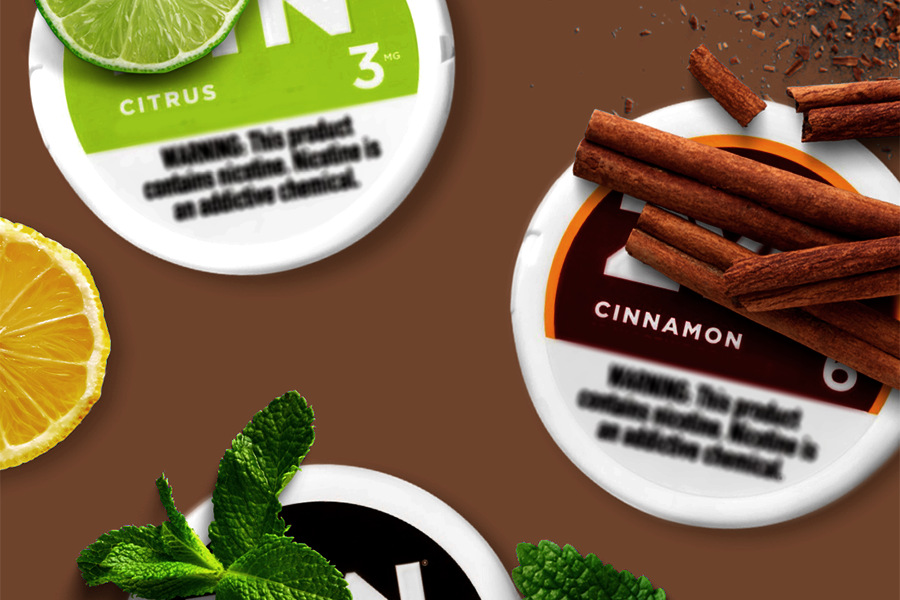Your cart is currently empty!
Exploring Different Types of Smokeless Tobacco Products: Snuff, Chewing Tobacco, and Snus

Understanding the Different Types of Smokeless Tobacco Products
Snuff
Snuff is a finely ground tobacco typically sniffed or inhaled into the nose. Its long history dates back to indigenous cultures in the Americas. Snuff gained popularity in Europe during the 16th and 17th centuries and eventually spread to other parts of the world. There are two major types of snuff: dry snuff and moist snuff. Dry snuff is finely powdered and is usually self-administered by the user with a pinched finger or a snuff spoon. On the other hand, Moist snuff is a moist tobacco blend placed between the lip and gum.
Chewing Tobacco
Chewing tobacco, also known as chew, is smokeless between the cheek and gums. It is usually available as loose-leaf tobacco or compressed into bricks or plugs. Chewing tobacco has a long history in the United States, especially in rural areas. It is often associated with the image of cowboys and baseball players. Chewing tobacco pouches, or chew pouches, are a more modern variation of chewing tobacco that comes in pre-packaged, ready-to-use pouches.
Snus
Snus, originating from Sweden, is a smokeless tobacco that comes in small, pre-packaged pouches. Snus is not meant to be spit out, unlike snuff and chewing tobacco. It is placed under the upper lip, where it releases nicotine gradually. Snus has gained popularity in Europe and is known for its discreet nature and tobacco-free variations.
History and Cultural Significance of Smokeless Tobacco
The use of smokeless tobacco can be traced back centuries, with indigenous cultures in the Americas using various forms of tobacco for medicinal, ceremonial, and social purposes. The introduction of tobacco to Europe led to its widespread use, with snuff becoming a symbol of wealth and status among the aristocracy. Chewing tobacco gained popularity in the United States during the 19th century, particularly in rural areas. It became deeply ingrained in the culture, with many associating it with traditions like baseball and rodeo. Snus, originating from Sweden in the 18th century, has a strong cultural significance in Scandinavian countries, where it is considered a part of daily life.
Advantages of Smokeless Tobacco Products
Smokeless tobacco products, such as pouches of tobacco, chewing tobacco plugs, and dipped tobacco, are frequently thought to have advantages over traditional smoking techniques. Products such as pouches, chewing tobacco, and tobacco plugs have the benefit of being convenient and portable. Users can consume these goods discreetly, without the need for smoking accessories or designated smoking sites. Additionally, smokeless tobacco may give a sensory experience with flavors and textures that appeal to various tastes. For people looking for an alternative to smoking, especially in places where smoking is forbidden, smokeless tobacco products such as pouches tobacco and chewing tobacco plugs provide a realistic nicotine consumption choice.
Comparing the Ingredients and Manufacturing Processes of Snuff, Chewing Tobacco, and Snus
The ingredients and manufacturing processes of smokeless tobacco products differ depending on the type. Snuff is typically made from air-cured tobacco leaves ground into a fine powder. Chewing tobacco, on the other hand, is made from fermented tobacco leaves that are aged, shredded, and flavored. Unlike the other types, Snus goes through a pasteurization process to ensure safety. The ingredients used in smokeless tobacco products can vary, but they often include nicotine, flavorings, sweeteners, and binders. It is important to read the labels and understand the ingredients before choosing a product.
How to Use Smokeless Tobacco Products Properly
Proper usage of smokeless tobacco products is essential to minimize health risks. Users typically place a small pinch between their thumb and index finger for snuff, then sniff or inhale it into the nose. When it comes to chewing tobacco, a small amount is placed between the cheek and gum, where it is slowly chewed or sucked on. Snus pouches should be placed under the upper lip, releasing nicotine gradually. Following the manufacturer’s instructions and avoiding swallowing or spitting out the tobacco juices are important.
Conclusion
The exploration of smokeless tobacco products like snuff, chewing tobacco, and Snus provides insight into their varieties, historical usages, and comparative attributes. Smokeless tobacco products offer certain advantages when utilized moderately and carefully by informed adults. Chewing tobacco offers users the pleasure of slowly enjoying different textures, like the satisfaction of shaving pieces from a dense chewing tobacco plug. For centuries, smokeless varieties also served cultural and social functions in some regions. They provide a discreet means of nicotine intake without secondhand smoke. Smokeless tobacco may also support harm reduction efforts by serving as a lower-risk substitute for smokers. The health effects of smokeless types can be reduced when consumed on occasion through a blend with optimized ingredients according to individual risk tolerance.
FAQS
How does snuff differ from Thc edibles?
While THC edibles contain cannabis-derived compounds, snuff is purely a tobacco-based product. THC edibles are consumed orally and metabolized differently in the body compared to the inhalation or absorption of snuff.
What is dip tobacco?
A: Dip tobacco, also called smokeless tobacco, refers to forms of ground-up tobacco, such as chewing tobacco or snuff, that are placed between the cheek and gum.
What is the proper way to chew tobacco?
The proper way to chew tobacco is to place it in your mouth, between your lip and gum. Slowly chew and suck on the tobacco without swallowing any juice or spit. Rotate the chew to a fresh spot in your mouth every few minutes.
How long does a plug of tobacco last?
On average, a single standard-sized plug will provide chewable tobacco for 1-2 weeks of regular use, with 1-2 shavings chewed daily. Smaller plugs will last proportionately less time.


